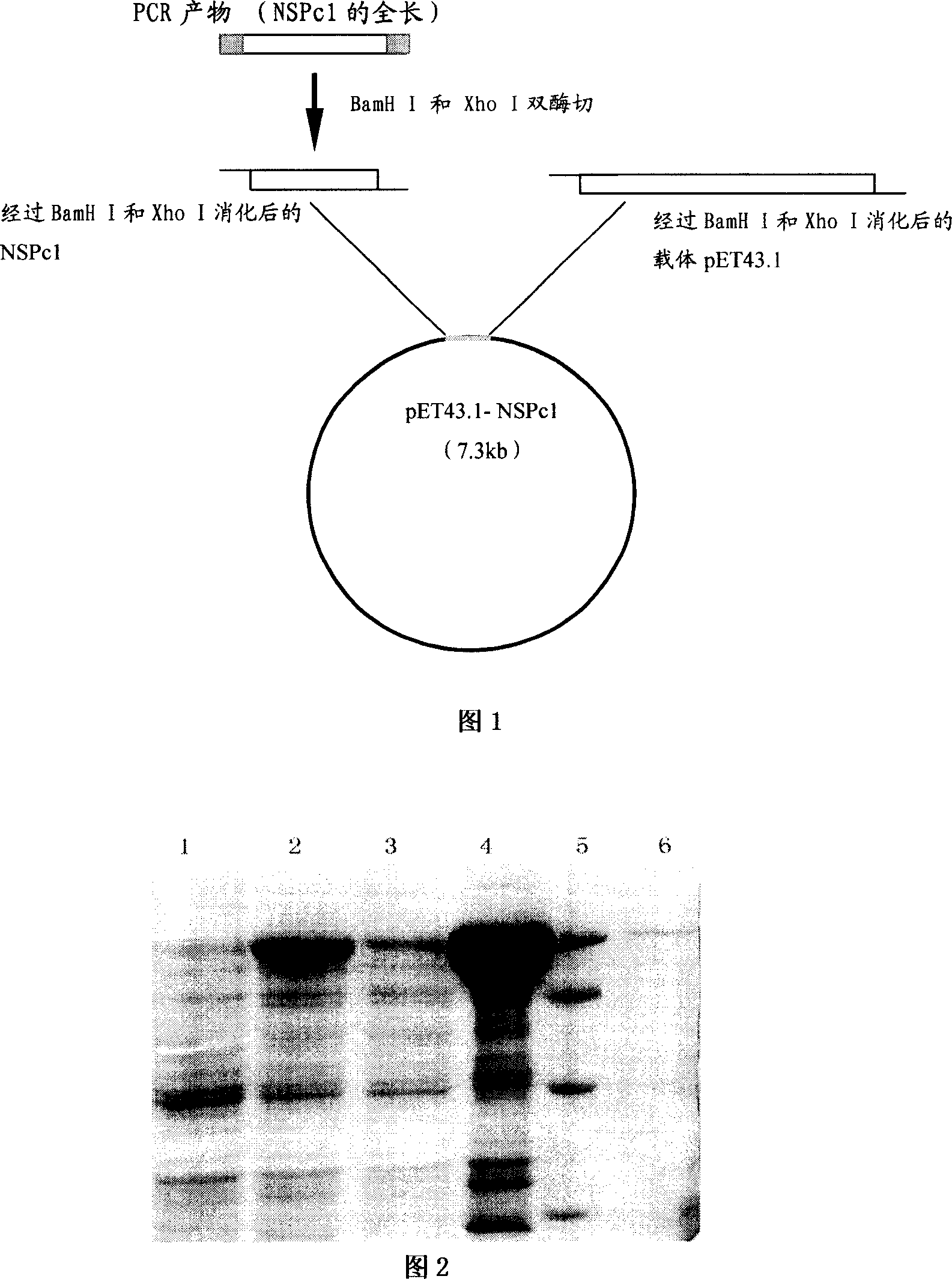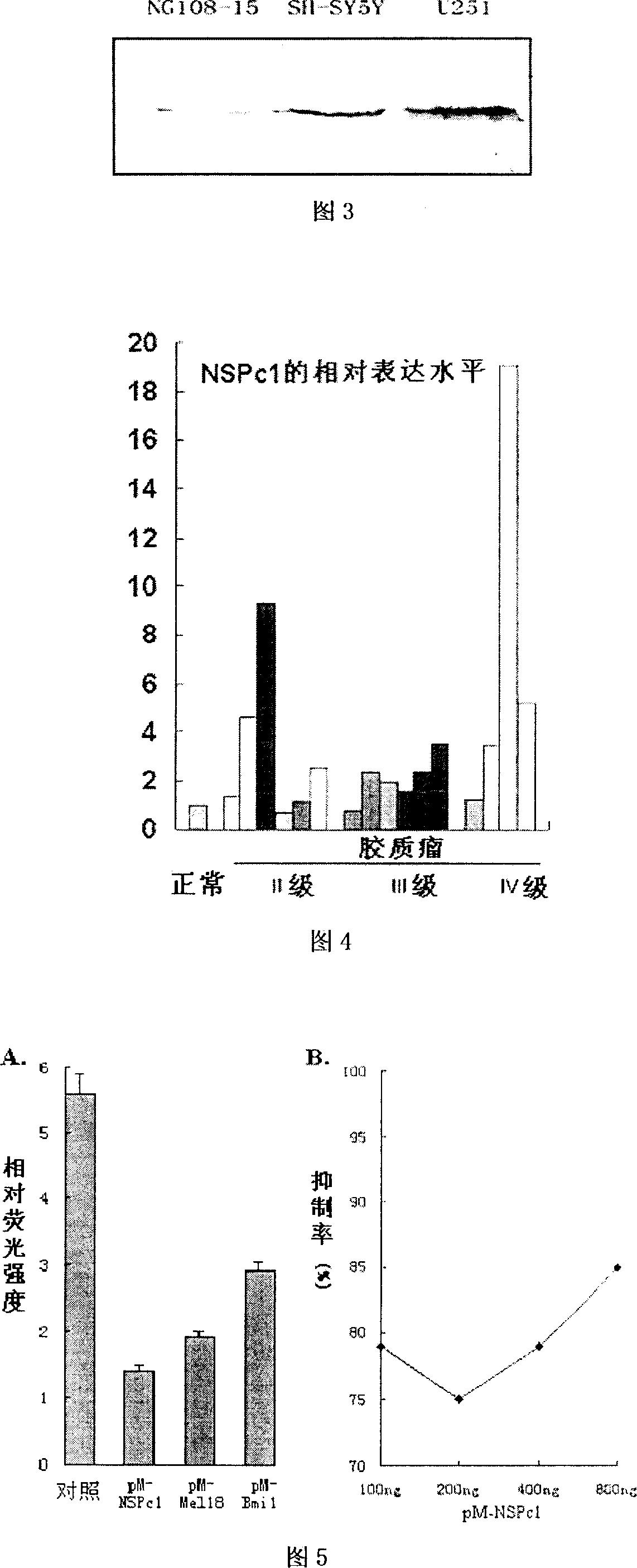Neural protein NSPc1 having influence on nerve tumor cell differentiation by tretinoin signal pathway
A nervous system and protein technology, applied in anti-tumor drugs, serum immunoglobulins, genetic material components, etc., can solve problems such as unclear possible role of NSPc1 and limitations of NSPc1 application
- Summary
- Abstract
- Description
- Claims
- Application Information
AI Technical Summary
Problems solved by technology
Method used
Image
Examples
Embodiment 1
[0037] Primer sequences and purposes used in the present invention:
[0038] Primer name
Embodiment 2
[0040]Cloning of the NSPc1 gene:
[0041] HeLa cells were cultured on a 10cm dish in DMEM containing 10% FBS at 37 degrees, 5% CO 2 Cultured until the number of cells reached 2×10 7 Above, cells were harvested to extract total RNA and subjected to reverse transcription. Reverse transcription was carried out using a kit from PROMEGA, and the method is shown in the kit instructions. Using this cDNA as a template, the NSPc1 gene was amplified. The primers used were N-up / dn (see Example 1 for the sequence). The conditions of the PCR reaction are: NSPc1, the annealing temperature is 62 degrees, and the extension is 1.5 minutes. The other conditions are the same as the ordinary PCR conditions, and Pfu enzyme is used.
[0042] After the PCR product was tailed with Taq enzyme at 72 degrees for 10 minutes, it was directly connected to the pGEM-T vector (Promega company product). The connection reaction was carried out according to the kit instructions, and carried out at 4 overnigh...
Embodiment 3
[0044] Preparation of anti-NSPc1 specific antibody:
[0045] Antigen preparation: the full-length fragment was amplified by PCR from the cDNA template of NSPc1, and the primer was N-43.1-up / dn (see Example 1 for the sequence). Both ends of the PCR fragment contain restriction sites BamH1 and XhoI, so these two enzymes were used to digest the PCR product and vector plasmid pET43.1. Then, the digested PCR fragment and the vector were ligated with T4 ligase to form a recombinant plasmid (see FIG. 1 ).
[0046] PCR conditions: the annealing temperature is 63 degrees, the extension time is 1 minute, and other conditions are the same as ordinary PCR reactions. PCR reaction product 50ul (about 5ug) and vector plasmid (pET43.1)6 - 10ug were digested with BamH1 and XhoI respectively, and the DNA fragments were recovered by agarose electrophoresis, and ligated in a 10ul system, which contained 1u1 10x ligation buffer, 1ul T4 ligase, 100ng digested PCR fragments, 200ng digested vector ...
PUM
 Login to View More
Login to View More Abstract
Description
Claims
Application Information
 Login to View More
Login to View More - R&D
- Intellectual Property
- Life Sciences
- Materials
- Tech Scout
- Unparalleled Data Quality
- Higher Quality Content
- 60% Fewer Hallucinations
Browse by: Latest US Patents, China's latest patents, Technical Efficacy Thesaurus, Application Domain, Technology Topic, Popular Technical Reports.
© 2025 PatSnap. All rights reserved.Legal|Privacy policy|Modern Slavery Act Transparency Statement|Sitemap|About US| Contact US: help@patsnap.com



